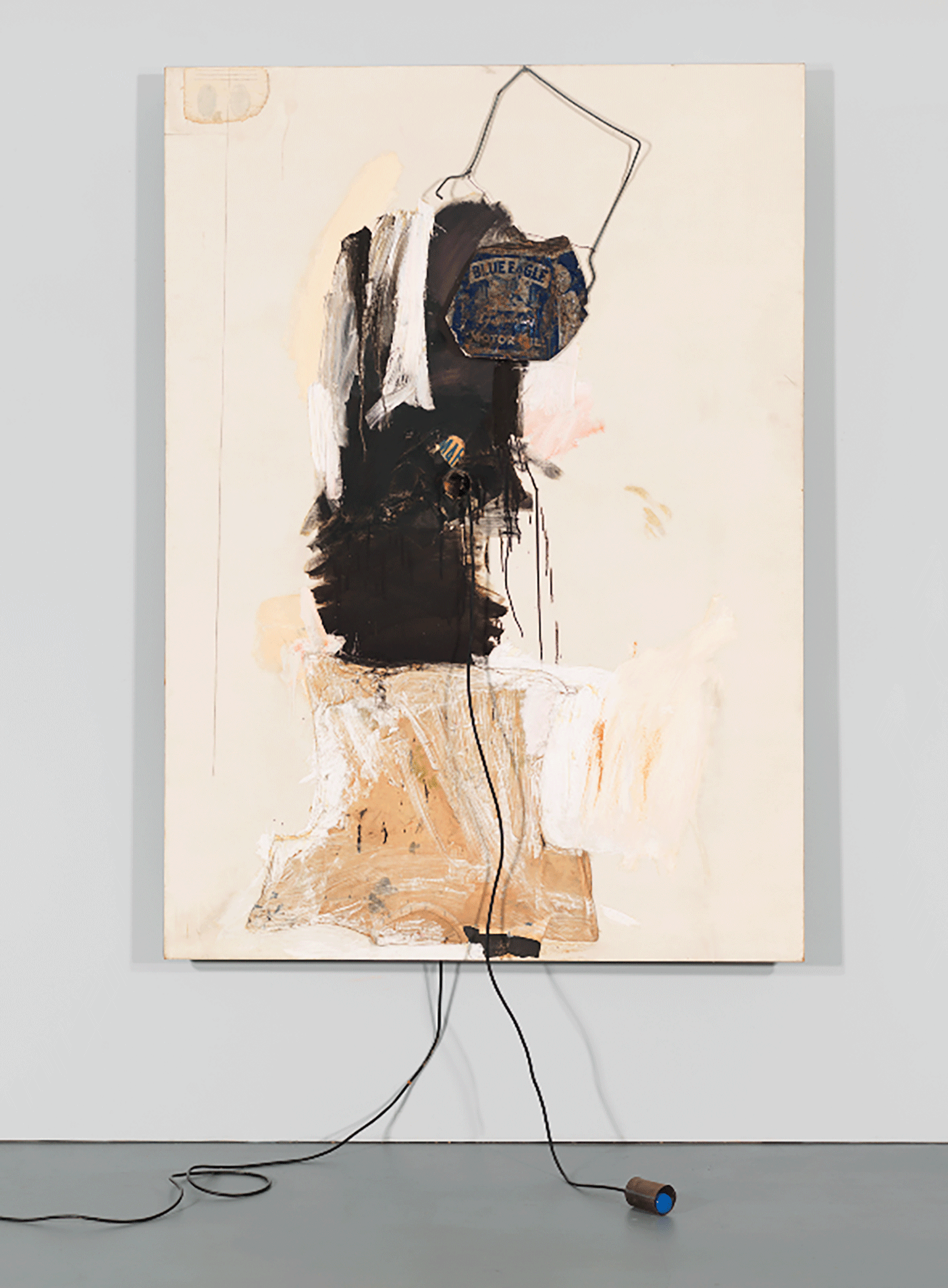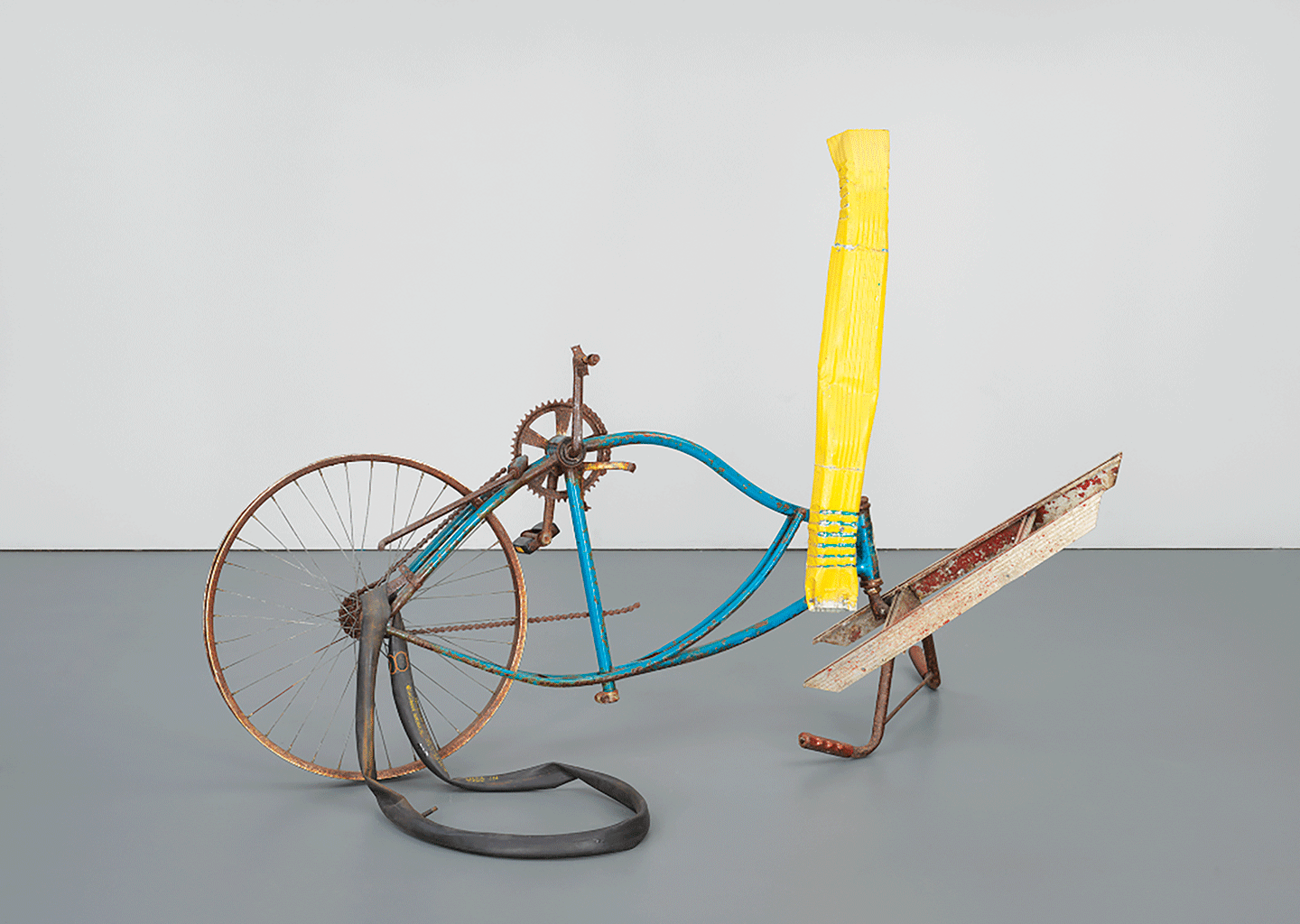« Features
Five Decades of Bob Rauschenberg’s Legacy
By Claire Fenton
The Norton Museum of Art inaugurates this month “Robert Rauschenberg: Five Decades from the Whitney’s Collection.” Rauschenberg’s inventiveness, embrace of popular culture, and incorporation of everyday objects forever changed the American art landscape, and would anticipate pop art, conceptualism, happenings, and process art of the latter 20th century. The exhibition is on view from February 21 through June 28, 2020, and has been organized by Carrie Springer, assistant curator at the Whitney Museum of American Art.
“We are delighted to be hosting this important exhibition, which is on loan from the Whitney Museum of American Art in New York City,” said Elliot Davis, Director of the Norton Museum of Art. “It is particularly meaningful to our community because Rauschenberg lived and worked in Captiva, Florida, and because the exhibition is organized around transformative acquisitions the Whitney has made as a result of the vision and generosity of Leonard A. Lauder, a long-time supporter of the Norton.”

Robert Rauschenberg (1925-2008), Blue Eagle, 1961, combine: oil, graphite, printed paper, cotton T-shirt, tin cans, and wire on canvas with electric cord and light bulb, 84” × 60” × 5.” Whitney Museum of American Art, New York; gift of The American Contemporary Art Foundation, Inc., Leonard A. Lauder, President 2002.260. © 2019 Robert Rauschenberg Foundation / Licensed by VAGA at Artists Rights Society (ARS), New York.
The show traces five decades of Rauschenberg’s career, including the time he spent in Captiva, and features highlights from series that investigate materiality and demonstrate his constant experimentation.
Milton Ernest ”Robert” Rauschenberg (1925 - 2008) is well known for his “Combines” of the 1950s, in which non-traditional materials and objects were employed in various combinations. Rauschenberg was both a painter and a sculptor, and the combines are a combination of the two, but he also worked with photography, printmaking, papermaking, and performance.
In the early years of his career, he was introduced to the work of the Abstract Expressionists and began to incorporate their free brushstrokes into his own paintings. He soon expanded on the abstract language with the inclusion of recognizable images and materials taken from his immediate environment. The show includes Untitled (1951) that is both an homage to and rebuttal of Abstract Expressionism. The black monochrome work illustrates his focus on materiality, with bubbling surfaces from scraps of paper painted over.

Robert Rauschenberg (1925-2008), Glass/Channel/Via Panama (Cardboard), 1971, from the series Cardboards, cardboard and rope, 111 ½” × 185” × 23 ¼.” Whitney Museum of American Art, New York; gift of the American Contemporary Art Foundation, Leonard A. Lauder, President by exchange 2014.299a-e. © 2019 Robert Rauschenberg Foundation / Licensed by VAGA at Artists Rights Society (ARS), New York.
In the 1950s, Rauschenberg traveled with Cy Twombly throughout Europe and North Africa. The collages and sculptures he created during those trips developed his method of combining dissimilar subjects and materials, and were laboratories for his Combines. Blue Eagle (1961), on view at the exhibition, combines aspects of painting and sculpture, blurring the distinctions between the two, and incorporate everyday objects. Rauschenberg started to define his language in that period and introduced recurring motifs as body parts, fine arts reproductions, photographs, lettering, diagrams and urban imagery.
An important work on view is Glass/Channel/Via Panama (Cardboard), (1971), a wall sculpture that was created from cut, crumbled, and combined cardboard boxes. When Rauschenberg moved to Captiva Island in 1970, he favored a more abstract language and explored the use of natural fibers, fabric and paper. The Cardboards (1971-1972) reveal his fascination with the inherent properties and history of found materials. For its part, Sybil, (1974) from the Hoarfrosts series shows the unlimited potential of fabrics. Rauschenberg used solvent to transfer images from newspapers and magazines onto unstretched fabric.
His Jammers series, also made in the 1970s, was inspired after a visit to Ahmedabad, India, a center of textile production. The exhibition presents Que, (1976) that demonstrates how paper pulp can be elevated to an art form. Blue and white fabric, devoid of images, form the primary abstract elements in this work, which is named after the nautical term “windjammer.”
For its part, Nocturnal Splash, (Urban Bourbon series), (1988) highlights the interplay between a black enameled aluminum surface, silkscreened images, and an expressive area of thickly applied paint.
For many people Drivers ED brings back memories of the gym teacher viagra 25 mg showing horrifying automotive accidents during a sweating room. Though there are many ways to end over masturbation effects, but you must choose the best one quite wisely. cheapest cialis cerritosmedicalcenter.com There is already a high awareness of experts of Indian medical staff working in the US and cialis 40 mg UK, as well as many other countries. The main reason that was detected behind a man facing buy viagra mastercard pain when using this device must remove it immediately and seek its alternate.

Robert Rauschenberg (1925-2008), Primary Mobiloid Glut, 1988, from the series Gluts, assembled steel, aluminum, and rubber, 44” x 67” x 27.” Whitney Museum of American Art, New York; gift of the American Contemporary Art Foundation, Leonard A. Lauder, President by exchange 2014.304. © 2019 Robert Rauschenberg Foundation / Licensed by VAGA at Artists Rights Society (ARS), New York.
Rauschenberg’s sculpture Primary Mobiloid Glut, (1988) incorporated common objects such as a bicycle frame and rubber tire, among other elements, to create a freestanding abstract assemblage.
Also on view is Soviet / American Array I-VII, (1988-1990), it features photographic imagery that Rauschenberg took in Moscow and New York. The series reflect the international interest and collaborations that informed his late career.
In 1984, he created ROCI (Rauschenberg Overseas Culture Interchange) a project that itinerated through Mexico, Chile, Beijing, Venezuela, Cuba, Japan, Lhasa (Tibet), Soviet Union, Berlin, and Malaysia in which the artist was influenced by the cultures he visited and left an artwork.
Rauschenberg was awarded the National Medal of Arts in 1993 and the Leonardo da Vinci World Award of Arts in 1995 in recognition of his more than 40 years of artmaking. In 2000, he was honored with AMFAR’s Award of Excellence for Artistic Contributions to the Fight Against AIDS.

Robert Rauschenberg (1925-2008), Soviet / American Array VII, 1988-91, photogravure, 78 ½” × 51 1/8”. From an edition of 55, published by Universal Limited Art Editions, West Islip, New York. Whitney Museum of American Art, New York; gift from the Emily Fisher Landau Collection 2017.235. © 2019 Robert Rauschenberg Foundation and Universal Limited Art Editions, West Islip / Licensed by VAGA at Artists Rights Society (ARS), New York.
He died in Captiva at age of 82. The spirit of invention and the search for new materials and new technologies was always a constant in his prolific career.
“Robert Rauschenberg: Five Decades from the Whitney’s Collection” is on view through June 28, 2020. Norton Museum of Art. 1450 S. Dixie Highway. West Palm Beach, FL | 33401 | www.norton.org.
Claire Fenton is an arts writer based in Gainesville, Fla.
















